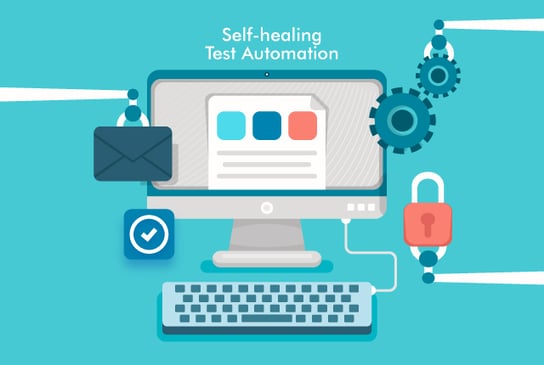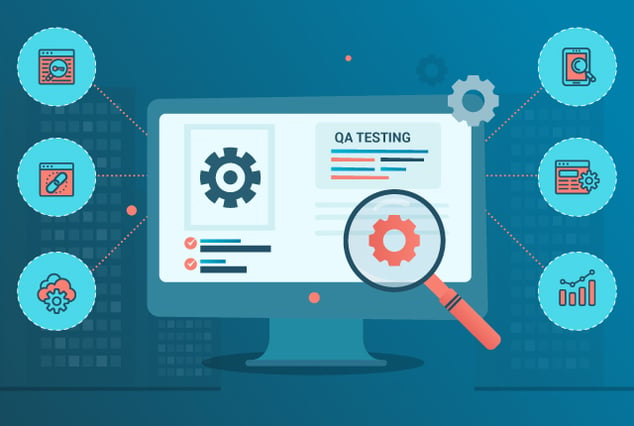
The digital age has made software integration a crucial part of any business’s success. Companies that continue to invest in big data, cybersecurity, and cloud technology — among other digital solutions — grow over 50% faster than their competition. To retain your edge, you must build and constantly maintain your digital infrastructure.
However, how do you ensure that your software will work smoothly and be free from glitches in the long run? The answer is self-healing test automation. This solution is a vital part of the software testing process that professional QA companies provide to ensure that your applications run well. Read on to know more about self-healing test automation and how it can benefit your business.
What Is Self-healing Automation? Why Is It Important?
Self-healing test automation refers to the method of using AI and machine learning to aid in the maintenance of other automated tests. This is done by identifying changes made in the application and then making automatic adjustments to ensure that the test doesn’t lose its functionality. In a nutshell, a self-healing test is an automation for test automation.
All businesses that use their own software will benefit from self-healing test automation. As management software and web applications are changed or updated, a huge amount of testing overhead is created. Improper test maintenance can result in problems like false positives and reduced reliability, which can negatively impact production.
Prior to the development of self-healing testing, software development teams had no choice but to manually conduct these tests. This process is time-consuming, tedious, and prone to error. The introduction of self-healing test automation changed the industry in a positive way. It made the testing process faster, more accurate, and more efficient. More importantly, it allowed software development teams to focus on resolving issues with the application itself rather than fixing tests.
How Does Self-healing Mechanism Work?
Self-healing automation follows a series of steps to properly manage automated tests:
-
Step-1: The self-healing algorithm gets activated, whenever "NoSuchElement" or a similar error occurs for an element mentioned in automation scripts.
-
Step-2: The AI and machine learning algorithms comprehensively search the application under the test’s user interface for signs of pre-existing objects.
-
Step-3: A comparison is then made between the data acquired from the search and the application model used in the automated tests.
-
Step-4: In case changes to the application under test are found, self-healing is initiated to automatically make necessary test modifications.
-
Step-5: As the self-healing automation runs, internal scripts fix themselves, and the changes made to accomplish this are likewise automatically detected.
-
Step-6: The self-healing tool finally remaps the objects to achieve error-free test execution.
Benefits of Self-healing Testing
Businesses adapt self-healing testing not only for convenience. It has many practical benefits for software maintenance and development:
-
Improved Test Accuracy and Reliability
Software performance is not static. Applications need constant maintenance and testing to ensure optimum functionality. However, traditional modes of testing are not foolproof, and errors do arise. An example is the infamous “NoSuchElementException” error that prolongs the testing process and puts doubt on the reliability of the test design.
Self-healing testing helps by improving the accuracy and reliability of the testing process. It allows the development team to run a small test base and accurately isolate the stable tests from the glitchy ones. AI and machine learning likewise ensure consistent output delivery, enhancing the overall reliability of the testing process.
-
Reduced Time To Test and Debug
Before an application is released to the public, it has to be tested several times to make sure it performs as advertised. Retesting is needed whenever these applications receive updates or modifications. This process can take a long time, especially if the software is to be tested on multiple hardware.
Self-healing automation significantly speeds up the testing process and reduces test maintenance time. Routine tests and debugging become a breeze since self-healing testing algorithms can determine repetitive activities quickly. In just a few hours, self-healing can finish the testing process. This is a huge improvement compared to the days or weeks needed by standard test automation or human testers.
-
Reduced Manual Effort and Cost
Unstable software test methods can make developers lose confidence in automated tests and resort to manual testing. This manual method of software management is tedious and tiring, which negatively impacts the team’s productivity. They are unable to give due attention to app feature validation since they are bogged down by these tests.
A self-healing test will lighten the team’s load and reduce the amount of manual effort required for test maintenance. The costs will be mitigated since less manpower and computing resources need to be allocated to software testing.
-
Increased Test Coverage and Scalability
Development teams can only conduct a limited number of tests manually, which puts a cap on test coverage. Self-healing automation removes this cap since it can handle multiple automated tests simultaneously. Moreover, it can widen test coverage by up to 10% through the automatic removal of repetitive coding.
Moreover, self-healing test automation gives you more time to build a solid test collection and increases scalability. This will translate into better-performing software, especially since all of its features can be tested properly.
-
Better Insights
Software development is a long and expensive process. Software typically takes around 700 hours to build and costs anywhere between $50,000 to $250,000. Self-healing test automation gives developers better insight into how the software works and helps them identify issues early on. Self-healing testing can speed up the development process and reduce your expenses.
Self-healing test automation also gives development teams a firmer grasp of several aspects of component and software performance. This allows them to create best practices that they can incorporate into future applications.
Agile DevOps Teams and Self-healing Test Automation
As people become more dependent on digital platforms and the demand for software development increases, Agile development teams strive to look for efficient and cost-effective testing alternatives such as self-healing test automation. Teams that incorporate self-healing testing in their software testing process are two and a half times more likely to satisfy their clients.
Self-healing automation is useful to agile teams regardless of their size. It allows them to fast-track production cycles and improve the quality of their software products. Moreover, self-healing test automation helps reduce their workload and allows them to focus on building more applications and refining existing features. All of these result in more customers and revenue.
There’s a learning curve for adapting a new solution like self-healing automation. However, this is just a minor downside that is easily outweighed by the many benefits that self-healing testing offers.
Right Approach for Automation Process
Software development and maintenance have a lot of moving parts. To ensure that everything runs smoothly, utilize self-healing test automation. This is the most effective approach you can take to streamline the automation process, eliminate errors, and boost overall test suite performance.
-
Determine Your Application
Before putting self-healing automation into action, you first have to be familiar with your software. Specifically, you have to identify frequent errors and other factors that are hampering its development. If you’re having trouble manually locating these issues, set up an automated alert system.
-
Preventive Actions
Prevention is better than cure. After self-healing testing is done fixing and fine-tuning your application, take notes of the test results to avoid making the same mistakes. Moreover, use the best practices you learned, so the problems or errors don’t recur.
Conclusion
Self-healing test automation is a crucial part of the software testing process. From enhancing test accuracy and reliability to reducing manual labor and expenses, self-healing automation provides a plethora of benefits to software developers and business owners alike.
If you want to incorporate self-healing test automation in your own system, partner with QASource. We are a leading software QA provider that has provided self-healing automation — among other software testing services — to various clients since 2002. Visit QASource to learn more about our services and prices.

